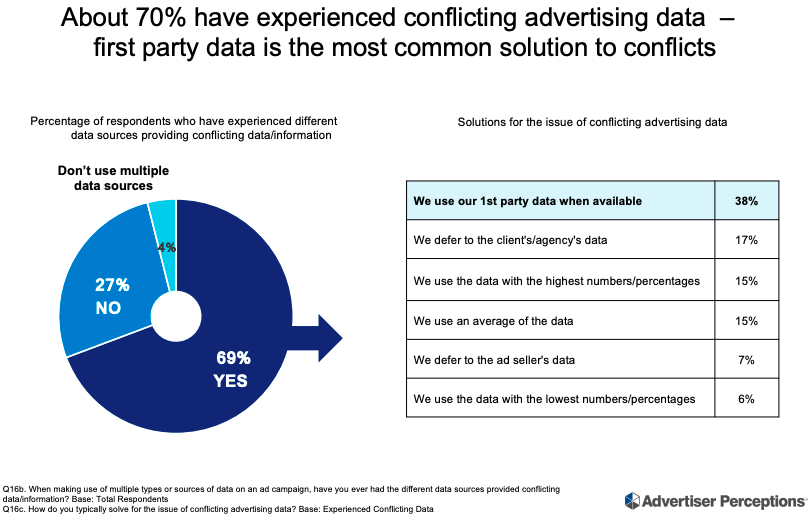
Advertisers and media buyers are using multiple, disparate sets of data to target audiences and buy digital media, but they are having a
hard time harmonizing them, but when push comes to shove, they usually default to so-called “first-party” data based on direct relationships they have with consumers.
That’s one of the top findings of a study that will be presented later today in a webinar by Advertiser Perceptions, Lucid and Cuebiq.
The findings, which
are based on interviews with 153 marketer and agency executives conducted in January and February, indicate advertisers and agencies currently use at least two or three data sources across the stages
they use to plan, buy, optimize and evaluate their digital ad campaigns.
While nearly a third of the ad execs said they rely primarily on first-party data, two-thirds said they rely
on data coming from other parties or so-called “contextual” targeting based on assumptions of who the audience is for the media they are buying.
About two-thirds (69%)
also said they have experienced conflicts across two or more sources of data they use for digital advertising and the most common source of resolving them is defaulting to first-party data, when
it’s available (see responses below).
The findings are significant, because the study also found that these sources of data play a key role in selecting digital media options and
benchmarking their performance.
“A data segment -- first-, second- or third-party -- is an audience definition,” notes, Ted McConnell, senior vice president-business
development at Lucid, adding, “We need to be clear about that. What you are paying for is an audience. The question is, is it the audience you bargained for? If it isn’t, your media will
be wasted, and your insights will be wrong. That’s a marketing train wreck, and it’s the reason 90% of brands think data accuracy is a top priority.”
